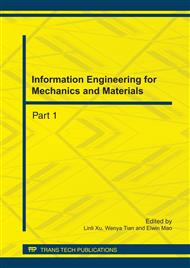p.346
p.350
p.355
p.360
p.365
p.370
p.375
p.379
p.385
Compressive Constitutive Relation for Multi-Layer Corrugated Boards
Abstract:
The investigation into the cushioning properties of multi-layer corrugated boards is a hotspot issue in the packaging field. People one after another investigate into the compressive properties based on experiments. As far as authors' knowledge is concerned, no theoretical research on compressive constitutive relation for multi-layer corrugated boards has ever been reported in literature. Therefore, we investigated into the compressive properties of multi-layer corrugated boards and analyzed their compressive breakage mechanism. The compression curve of multi-layer corrugated boards presents the three sections of linear elasticity, sub-buckling going with local collapse and densification. We constructed the compressive constitutive equation by a subsection function. The equation is standardized by the solid modulus Es of corrugated sandwich materials. Focusing on the structure characteristics, it can express the compression resistance and cushioning properties in the same curve for different basis materials. Comparison between the theory and experiments shows that a good consistency is achieved between theoretical and experimental stress-strain curves. By means of the compressive constitutive equation, the compression resistance and cushioning properties can be evaluated without more experiments, which facilitates the optimization of the structure of the corrugated sandwich structure and the optimized design of the cushioning package.
Info:
Periodical:
Pages:
365-369
Citation:
Online since:
July 2011
Authors:
Price:
Сopyright:
© 2011 Trans Tech Publications Ltd. All Rights Reserved
Share:
Citation:


